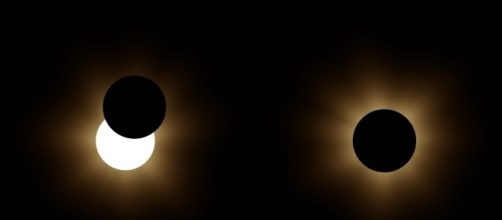A rare total Solar Eclipse will be visible on August 21, 2017, Monday. Though this upcoming total eclipse will last a couple of minutes, the event is still generating excitement through the locals of the involved states.
Details on the August 21 total eclipse
According to NASA and other government-related agencies, the upcoming Monday's total eclipse will have an approximate magnitude of 1.03. Meaning, it will be evident within a very narrow passage 70 miles crossing 14 different states.
The first appearance of the most-awaited event will be after 10:15 in the morning at Oregon's Pacific coast.
After that, it will proceed eastward location. Lastly, it will be visible in Charleston, South Carolina.
The longest span of the total eclipse will be 2 minutes 41.6 seconds, which is in Giant City State Park. While the partial solar eclipse will be seen from the larger path of the Moon's penumbra, that includes other parts of North America, South America, Western Europe, and Africa.
How to view the total solar eclipse?
While some people won't get to see the event on Monday, they will still have the chance to see this rare and beautiful eclipse. However, everyone who will try to witness the total solar eclipse should make sure that their method is safe.
Even if you are not a fan of any fact related to Science, NASA said you can still enjoy this August 21 event.
And if you really like to watch it through a special solar telescope, you may want to check out local events near you.
Here are some cities in Canada wherein you can witness the eclipse.
Victoria - Royal Astronomical Society of Canada and University of Victoria
Vancouver - Science World
Edmonton - TELUS World of Science
Calgary - TELUS Park and University of Calgary
Regina - Saskatchewan Science Centre
Saskatoon - London Drugs at Preston Avenue and 8 St. E
Winnipeg - Manitoba Museum
Toronto - Ontario Science Centre, York University, and University of Toronto
Ottawa - Canadian Aviation and Space Museum
Montreal - McGill University and Espace pour la vie
Saint John, N.B. - Saint John Astronomy Club
Whitehorse - Shipyards Park
What is a solar eclipse?
A solar eclipse is an event wherein the Moon passes between the Earth and the Sun.
The moon will either wholly or partially cover the image of the Sun as viewed from the Earth.
On the other hand, a total solar eclipse occurs when the Moon's visible diameter is larger than the width of the Sun, that may lead to blocking all direct sunlight. This event will turn day into darkness.
The previous total solar eclipse was June 8, 1918, which is visible across the entire contiguous of the United States. The totality of the eclipse occurs in a narrow path across the surface of Earth, with the partial solar eclipse seen over the encompassing region thousands of kilometers wide.


